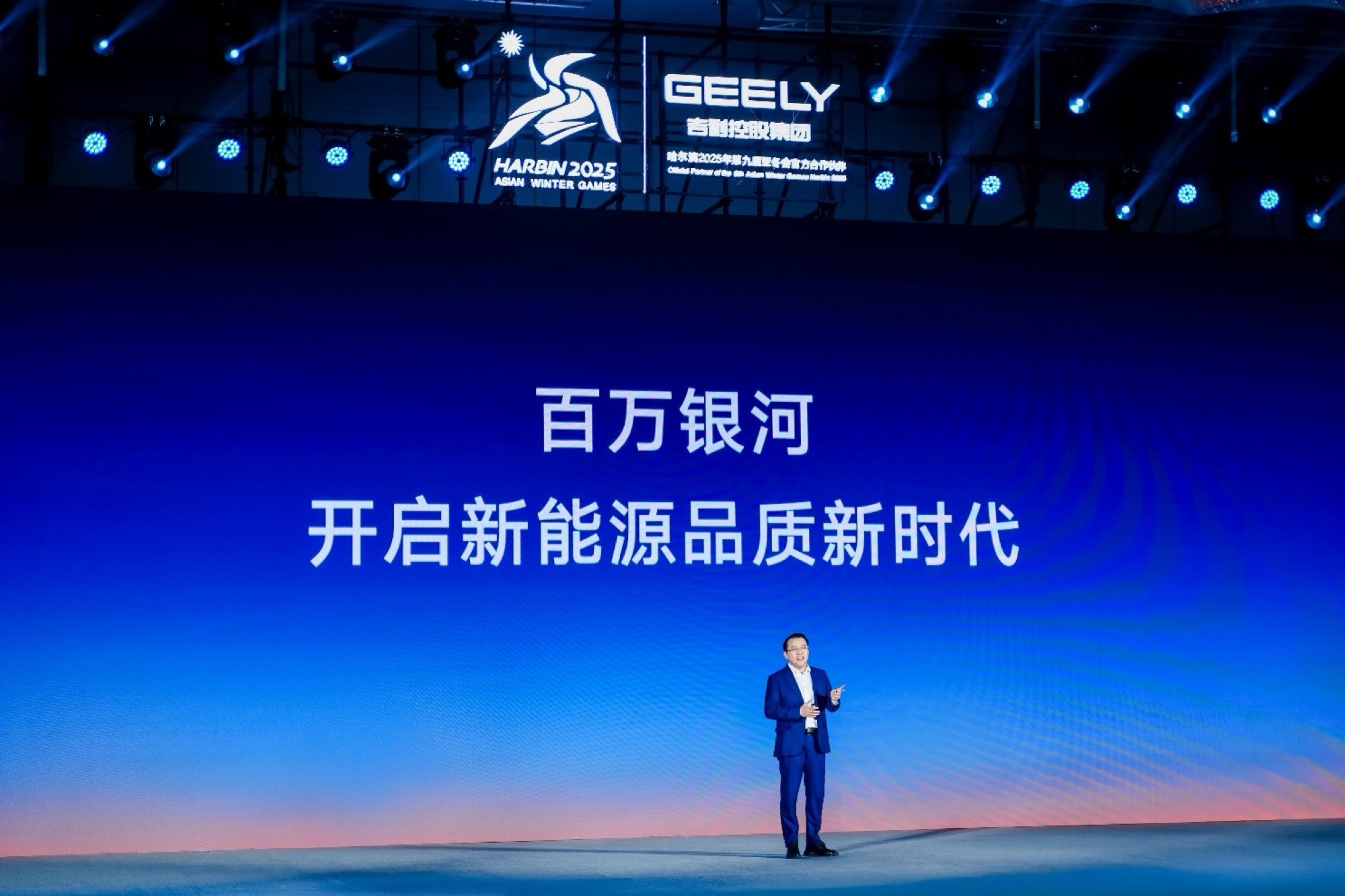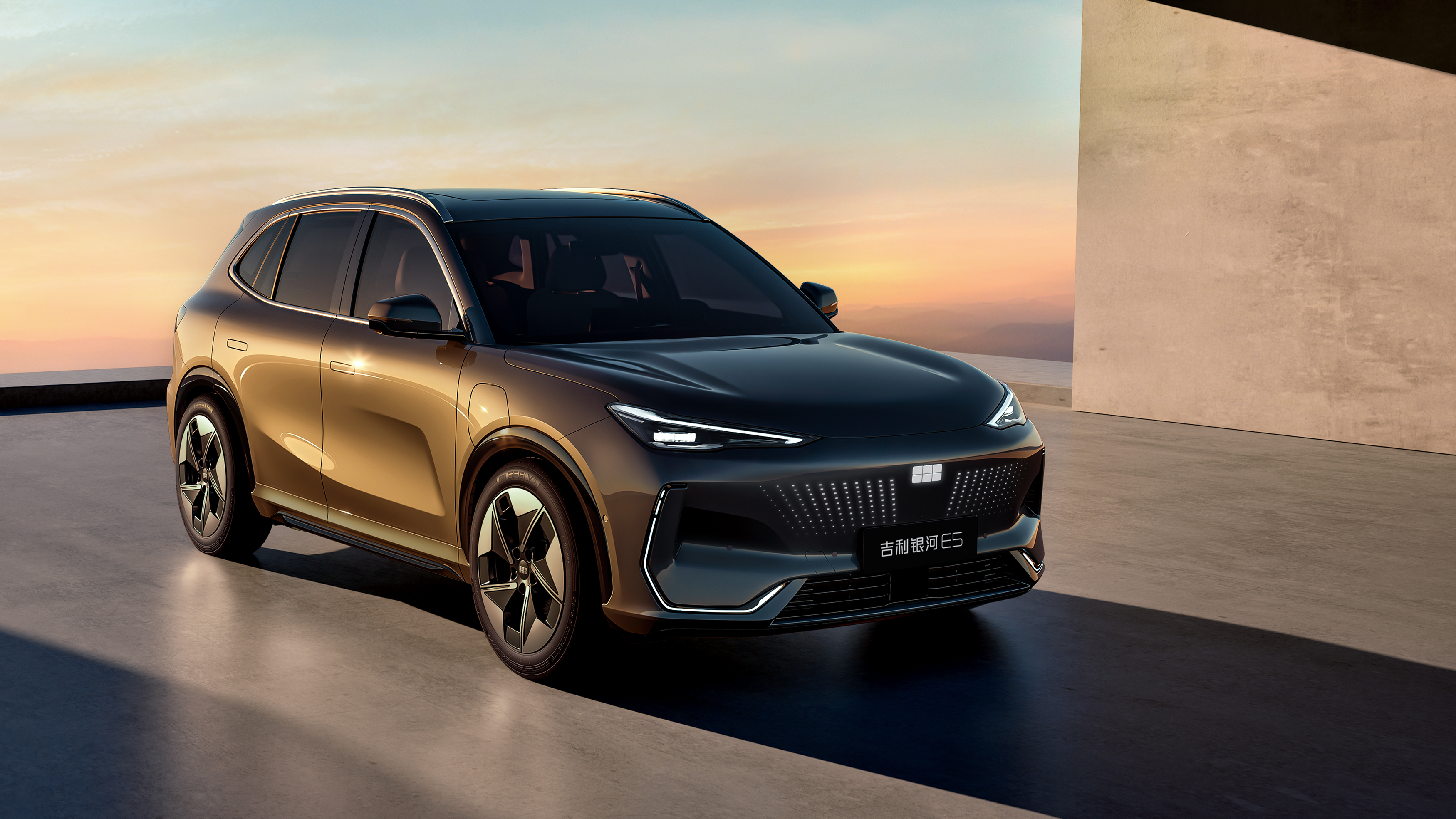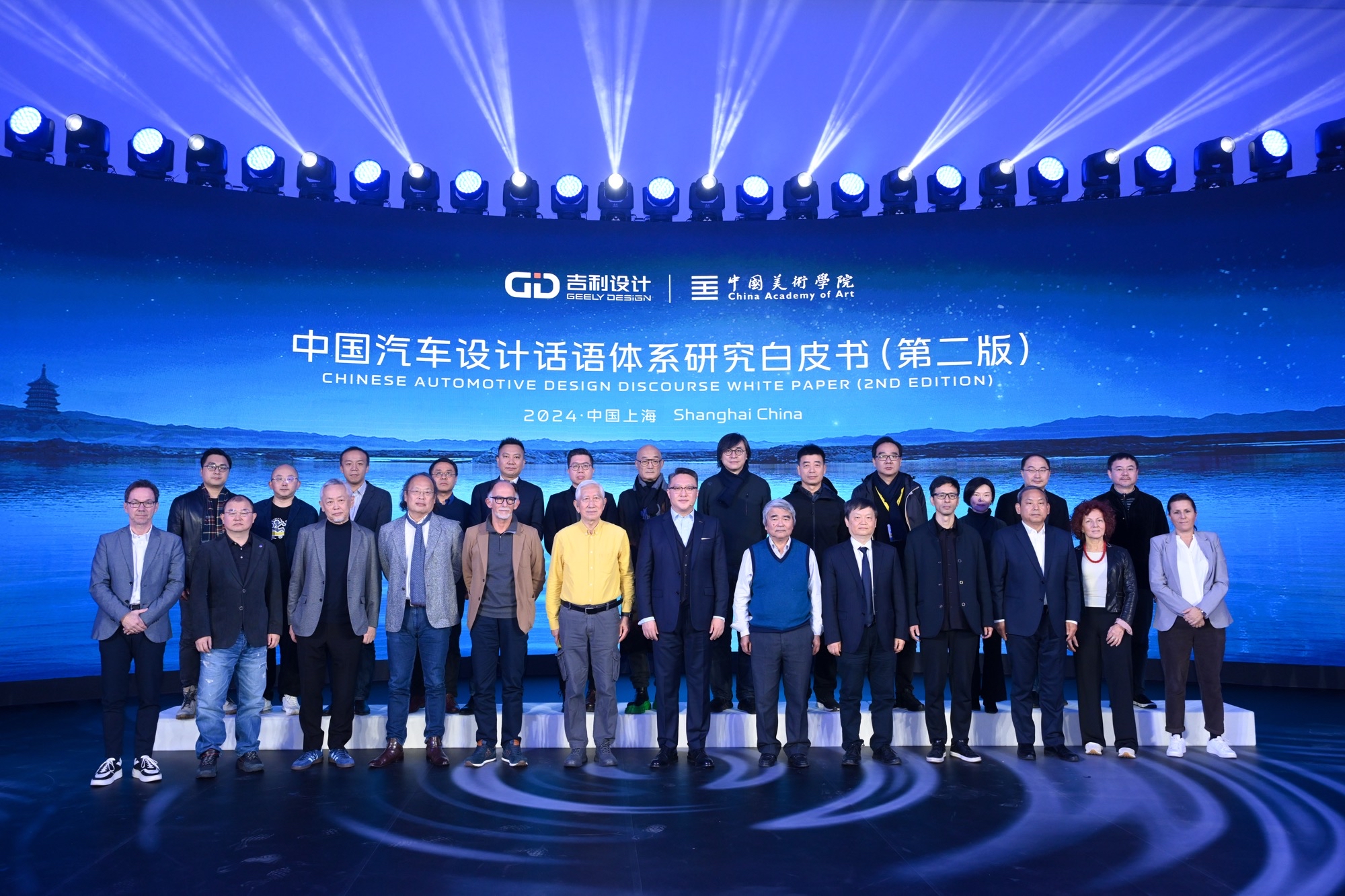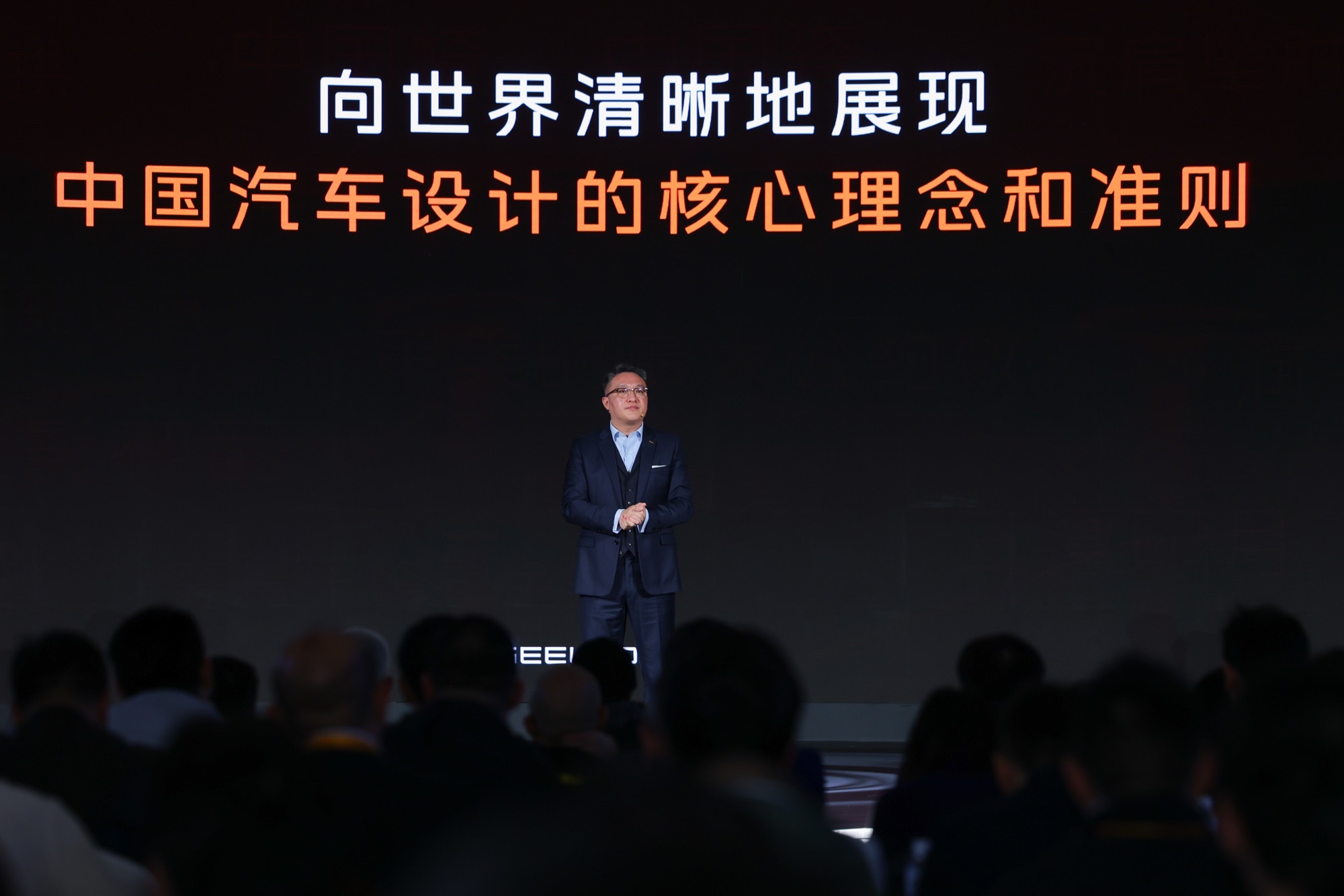Two years ago, on February 23, the CEO of Geely Auto Group, Gan Jiayue, announced the establishment of the new energy series, GEELY, targeting the mid-to-high-end segment. In this year’s commencement speech after the Spring Festival, he emphasized “launching the era of millions of GEELY with an entrepreneurial spirit.” Looking back at the development of the automotive industry over these two years, we can see GEELY progressing from its initial explorations to a formidable force in the current new energy vehicle market.

Throughout 2024, GEELY’s sales approached 500,000 vehicles, achieving an 80% year-on-year increase in sales. In January this year, the entire automotive market entered a slump following the year-end “sales push,” yet Geely’s domestic sales reached nearly 240,000 vehicles, ranking first in domestic car company sales. Among them, the GEELY Galaxy L7 EM-i became the best-selling plug-in hybrid model in China’s car market, while the GEELY Galaxy E5 became the second best-selling pure electric SUV, only behind the Model Y. In 2025, GEELY plans to launch 5 new energy products, aiming for one million in sales.
Why has GEELY achieved both sales and reputation success in such a competitive market?
This success stems from the comprehensive integration of technology, design, manufacturing, and marketing within the vast Geely ecosystem. For many car companies, automotive design is a crucial yet elusive variable. However, within the development of the GEELY series, design has played a unique and dazzling role.
Analyzing GEELY’s product lineup, from the GEELY Light concept car unveiled in 2023 to the Galaxy L7 EM-i with over 20,000 units sold monthly, GEELY has gradually established a distinctive family design language. Elements like “light ripple,” “aesthetic common divisor,” and “design with intention,” combined with their technical strengths and Chinese insights, are woven throughout, granting the products a strong identity and advancing a new paradigm of original Chinese design. From product innovation to a systematic design ecosystem, Geely leverages design as a catalyst for both brand elevation and industry transformation.
Design X Technology: Decoding the Genetic Blueprint of GEELY’s Hits
“Chinese brands have never lacked price advantage, but if we don’t focus on value, quality, and technology, we believe it won’t be possible to maintain long-term customer preference.” This was stated by Gan Jiayue at the launch of the GEELY New Energy Strategy two years ago. Creating intelligent premium cars has always been GEELY’s principle. This applies to design as well; each GEELY model is, in fact, a cultural proposition.
At the unveiling of GEELY’s first concept car, the GEELY Light, Chen Zheng, Vice President of Geely Auto Group, stated: “The GEELY Light aims to establish a new paradigm for Chinese electric vehicle design and set a new benchmark for Chinese smart electric vehicle design.” Eleven months later, the GEELY E8 was launched, heavily incorporating design elements from the GEELY Light concept car.The Galaxy E8 boasts the world’s first mass-produced integrated luminous front “Ripple of Light.” It is not simply achieved by drilling holes in the front bumper for light transmission: when all the vehicle’s lights are off, the entire front seamlessly integrates, and when the lights are on, 158 luminous windows form a ripple matrix, a design unseen in other models.

As is well known, bumpers with a layer of paint do not allow light to pass through. So, how can it transmit light without holes? Inspired by the translucent craft of Chinese Linglong porcelain, it uses Geely’s self-developed micro-perforation laser-engraving technology. On the 3-layer material of the front bumper, two layers are laser-etched, creating precise 0.2 mm micro-holes. Each luminous window contains over 100 micro-holes, finished with a layer of special varnish for uniform light transmission.
In its overall stance, the Galaxy E8 resembles a tiger poised to strike. This “tiger body” stance allows the Galaxy E8 to achieve a drag coefficient (Cd) of 0.199, making it one of the lowest in the automotive market. In two intuitive design details on the Galaxy E8, we can see Geely Galaxy’s crucial design philosophy — the deep integration of design and technology. This philosophy is also upheld in models following the Galaxy E8.
In August last year, the Geely Galaxy E5 was launched, positioned as an A-class pure electric SUV, marking Geely Galaxy’s first global model. This meant the design needed to cater to aesthetics across different races, cultures, and regions. Against this backdrop, the Geely design team demonstrated deep insight into industry trends and global cultural commonalities, ultimately resolving the challenge with the “greatest common divisor” of global aesthetics.
This greatest common divisor is precisely China’s porcelain. The family design language of “Ripple of Light” is retained, presenting a “transparent porcelain” quality on the E5’s front face. The entire body showcases a “lustrous beauty” surface design, akin to porcelain’s warm, full, and delicate texture.

In the interior, the Galaxy E5 also incorporates Chinese wisdom. The Chinese chair achieves a soft back and bouncy seat feel, with the back cushion using aerospace-grade space memory foam. The seat cushion features a 5+1 layer zonal design, adding a 15 mm thick, 5-second slow rebound zero-sensitivity soothing layer to the traditional 5 layers, perfectly meeting the driving and riding needs of Chinese users. The main driver’s seat adopts a high armrest design, offering a “sunken shoulder, relaxed elbow” seating comfort. This is also a deep integration of design and technology.
The design philosophy of the Galaxy Starship 7 EM-i, which debuted just last December, derives from the 2,400-year-old “The Rites of Zhou” in “The Kaogong Ji”: “Every craft has a purpose.” Geely merges high-value design with technological aesthetics in this vehicle.For instance, during long-distance driving, energy replenishment can become one of the user’s anxieties. The Galaxy L7 EM-i inherits the family’s front-end and design style, achieving a drag coefficient (Cd) of 0.288. To achieve this ultra-low drag, GEELY conducted over 2,000 data validations and more than 150 hours of wind tunnel testing, optimizing over 20 drag-related details throughout the vehicle, ultimately reducing the overall drag coefficient by 62 counts. This improvement is directly reflected in an increased range, allowing users to drive an additional distance equivalent to one more service area. Additionally, under the support of Raytheon Super Electric Hybrid EM-i, it achieves a CLTC driving fuel consumption of 3.75 L per 100 km.
Under the demands from users and product definitions, the Galaxy L7 EM-i embodies excellent overall vehicle design. It avoids ostentatious elements and avoids complex, deliberately created visual expressions, instead pursuing the essence of design and focusing on the real needs of users—this is the “Design Must Have Intent” pursued by Geely Design.
Today, the GEELY Galaxy product series has long established a familial design language, yet this family resemblance is not merely a “cookie-cutter” approach. It aligns closely with Zheng Chen’s design values: family resemblance is about conveying spirit, not just superficially resembling each other—as in the saying, “Dragon gives birth to nine sons, each different,” but they share the same DNA.
At the product level, GEELY Galaxy deeply integrates design and technology, creating high-value models for users. The higher goal is to promote the establishment of a Chinese automotive design discourse system at the industry level.
Systematic Breakthrough: Building a “Production-Study-Research” Design Ecosystem
Throughout the century-long development of the automotive industry, European and American car companies have established their design methodologies. It might be a signature grille, a hood ornament, or muscular body lines—these elements have gained global recognition.
During several decades of development for Chinese car companies, the journey has progressed from reverse engineering to proactive research and development, from technology introduction to independent innovation. However, in the field of automotive design today, when it comes to Chinese design, there is not yet a concrete first reaction. Yet, China has long been the world’s largest market for new energy vehicles, and facing the absence of a theoretical system, the new energy vehicle industry urgently needs to establish a comprehensive Chinese automotive design discourse system.
Geely’s breakthrough in original design lies in identifying and addressing issues from an industry perspective, actively building set of ecosystems encompassing theoretical exploration, integration of production, study, research, and AI empowerment. In solving its challenges, it also solves industry-wide problems.
On December 6, 2023, less than a year after the establishment of GEELY Galaxy, the “Good Design: Power to Change the World | 2023 International Automotive Design Forum and Geely Design Decade Celebration” was successfully held. Geely, in collaboration with the China Academy of Art, released the “Chinese Automotive Design Discourse System White Paper (First Edition)” (hereinafter referred to as the “White Paper”). This White Paper reflects forward-thinking on the construction of Chinese automotive design theory and systems amidst major changes.This indicates that Chinese automotive design is swiftly transitioning from “experience summary” to “methodology construction.”
A year later, in December 2024, at the “China Design Global Aesthetics, 2024 International Automotive Design Forum,” Geely released the “White Paper (Second Edition),” merging theory with practice to further enrich and refine the research framework of Chinese automotive design. The objective is, after establishing technological confidence with Made in China, to build design confidence with Designed by China.

Behind the theoretical breakthroughs is the collaborative academic research between Geely Design and universities, facilitating the establishment of a discourse system for Chinese automotive design. Geely Design, in collaboration with Hunan University, completed the “Experience Design Research of Global ‘Comfortable Cars’ in the Smart Era,” and with Sichuan Fine Arts Institute, the “Design Form Research with the Theme of Chinese Culture ‘Moistening’ in the Era of Globalization.” These reports, through global surveys and cultural insights, create Chinese designs that represent the era and carry cultural imprints. Geely Design also conducted systematic research on the design standards of “Chinese R-Corner.”
Today, Geely Design is constructing a protective moat for Chinese automotive design through the “Theory-Practice-Talent” triple-helix model, creating a new paradigm of Chinese original design. This signifies China’s shift from being a follower to a leader in design. Geely Galaxy is a significant representation of Chinese original design reaching new heights in product realization.
Chief Designer Insights: Geely Design’s “Long-termism”
In his 2025 New Year Address, Li Shufu, Chairman of Geely Holding Group, stated: “Adhere to long-termism and provide every user with high-quality intelligent boutique cars.” The “long-termism” Li Shufu spoke of is already ingrained in Geely’s technology, design, manufacturing, and marketing.
As a core component, design makes “long-termism” crucial. Behind Geely Galaxy’s design breakthrough is a key figure—Geely’s Global Chief Designer, Chen Zheng. His career spans the East and West, blending an international design perspective with deep-rooted Chinese cultural foundations. His long-termism concept continuously drives the evolution of Geely product design.
In 2006, Chen Zheng ventured to Turin, Italy, to establish the earliest European design center for a Chinese automaker. At that time, China’s automotive industry was in its infancy with weak design capabilities. He realized that to anchor Chinese automobiles in the international market, it was imperative to draw global design wisdom from the source.

In 2022, upon joining Geely, Chen Zheng faced the challenge of integrating international design concepts within the Chinese market to create products with global aesthetic appeal that also reflect the essence of Chinese culture. Through signature design languages like the ripple of light in the Galaxy series, the originality of Chinese design is showcased. As he noted, “Design is the best translator of a brand and its most powerful driving force.”Unlike other designers, Chen Zheng and his Geely design team never confine their creations to the realm of aesthetics. Geely’s design is not merely about crafting appealing exteriors; it also serves as a comprehensive strategic tool encompassing product positioning, market competition, and user experience. This reflects the design force formula proposed by Chen Zheng, where design force = design quality / (cost + efficiency) x aesthetics and other factors. This requires the first focus to be on design and product quality, the second on cost as the core in a competitive landscape, and the third on efficiency demands. This means creating visually appealing and practical products through high-quality, high-efficiency design within limited resources.
Today, the Geely design team is composed of nearly 1,000 designers from over 20 countries and regions, covering diverse cultural backgrounds and professional fields. In the era of intelligent electric vehicles, design is no longer a solo performance by a few star designers but necessitates systematic team collaboration. As he put it, a shift from the hero’s view of history to a people’s history of fighting side by side.

From a pioneer in Turin to Geely’s global design director, Chen Zheng has demonstrated the multifaceted significance of design throughout his over 20-year career—it is an expression of aesthetics, a strategic weapon, and a driving force behind the rise of Chinese automobiles. The commitment to long-termism embodied by him and the Geely design team is the fundamental reason why Geely Auto has remained at the forefront of China’s automotive industry for years.
Epilogue
The success of the Geely Galaxy series is rooted in Geely Auto’s decades of accumulated experience. Since 1986, Geely started with manufacturing and gradually achieved technological breakthroughs and design leadership, with the Galaxy series being the latest representation of Geely’s evolution. The success of the Galaxy series design stems from its deep contemplation of product design essence, integrating design with technology.
On the design front, Geely proposes the core concept of “design as strategy.” On the technology front, rapid updates and iterations have been achieved; this year, Geely took the lead in integrating DeepSeek large models, accelerating the intelligent transformation of the design process. In March 2025, Geely will release its AI intelligent strategy. This year, the Geely Galaxy plans to launch 5 new energy products, aiming for a million-unit sales target.
Through the deep integration of design and technology, the Geely Galaxy has created a series of high-value intelligent boutique cars. From mining cultural inspiration to integrating global aesthetic trends, each product iteration steadily enhances brand value. In the track of intelligence and new energy, the Geely Galaxy series is not only a showcase of technology but a reflection of brand confidence, painting a brighter future for users’ travel experiences.
This article is a translation by AI of a Chinese report from 42HOW. If you have any questions about it, please email bd@42how.com.
